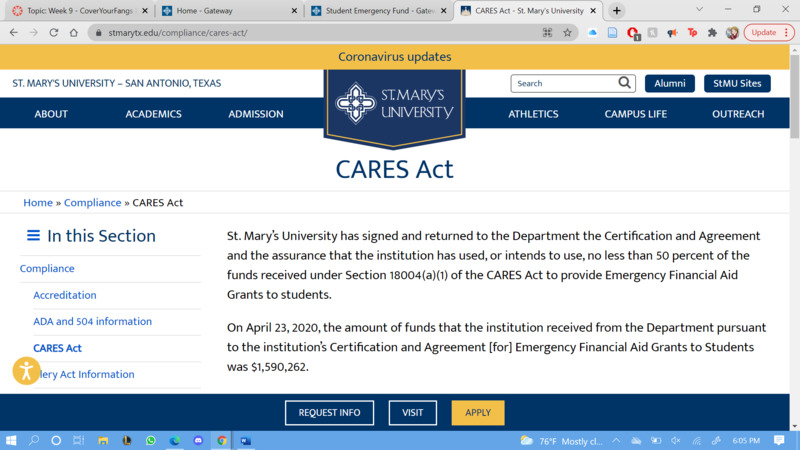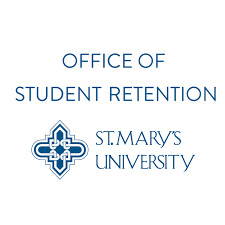Covid Campuses: How St. Mary's University Cared for Students
By Claudia Sanchez, Paul Garza, and Alicia Martinez, History majors at St. Mary's University.
The Covid-19 pandemic has had an impact on many people. The pandemic made many things come to a halt--some jobs got cut, offices closed, and more. However, schools across the country continued educating virtually. Despite the ongoing pandemic, K-12 schools, community colleges, and universities were all under unique circumstances requiring different responses. Some schools shifted to a virtual experience, others came back to in-person, and for many, it wasn't so simple. There were even schools that had to implement hybrid models of learning.
Like many universities, St. Mary's faced a lot of uncertainty. In the early months of the pandemic, St. Mary's didn't know when students would live on campus again. The school didn't know how to receive incoming students. This transition to virtual learning changed many aspects of the college experience including student orientation, living on campus, and utilizing campus resources. In spite of these uncertainties, St. Mary's University remained a resource for finances, mental health, housing, and education for all their students at all points of the pandemic.
Zaragoza Orientation: Summer 2021
St. Mary's University strived to ensure safety measures were properly taken to keep students and staff safe during the course of the COVID-19 pandemic. For the Zaragoza orientation experience, the university worked with the student led organization that conducted the orientation program for new students attending St. Mary's. Their goal was to provide a well-rounded orientation program that allowed students and parents to build a connection with the St. Mary's community while still allowing people to feel safe and comfortable given the uncertainty of a pandemic.

Covid-19 Safety Post During Summer 2021
St. Mary's used social media as a way to reach out to the community regarding Covid-19 safety announcements prior to Zaragoza days during the summer.
Prior to Zaragoza orientation days (August 11-13, 2021) student directors worked closely with other university organizations to ensure a safe orientation would be provided for incoming students and their families. Zaragoza leaders attended workshops over the summer to help prepare them for their roles as orientation leaders for new students. They wanted to create an inviting atmosphere so students would feel more comfortable as they became acclimated to the school’s community. Some activities were scheduled to be on Zoom because personal contact in large groups was limited. In between Zoom sessions, Zaragoza leaders had to opportunity to interact with small groups of students by giving tours around the campus and introducing students to the support groups available on campus.
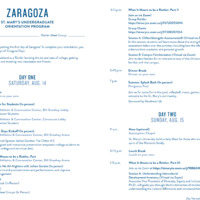
Zaragoza Orientation Program
Throughout orientation days in August of 2021, the program outlined events that were held via zoom to minimize personal interaction among large groups.

The Zaragoza Project: A Covid Experience
The Zaragoza Director created different project outlines that needed to be approved by the university to ensure that it accommodated COVID-19 restrictions.
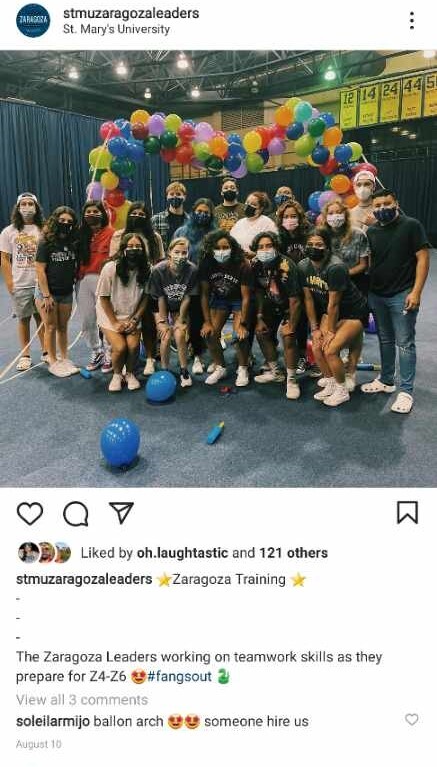
Zaragoza Training
Zaragoza leaders wore their masks and teamed up in the days leading up to orientation to plan safe activities for students and parents.
With the changing protocols for COVID-19 safety, leaders were in charge of smaller student groups that would better accommodate to guidelines established by the CDC. Zaragoza leaders found this beneficial for the student groups because they were able to build a better sense of community amongst each other. Additionally, students benefited from having a closer connection to their Zaragoza leaders who were able to provide information about student resources and community safety regarding the pandemic.
Dorm Living During Covid-19
Attending Zaragoza (St. Mary's orientation) is a defining moment in becoming an official Rattler here at St. Mary's University. Living on campus and dorm life is another essential part of the college experience. When the Covid-19 pandemic hit, everyone including the university had questions. What happens when you get sent home? What happens when there are no more roommates? How is community to be built during a pandemic? Covid-19 changed the way St. Mary's University facilitated living on campus.
During Spring 2020, St. Mary's residents were sent home due to the pandemic. Despite the chaos that it created, the office of residence life and student staff continued to serve students as a resource. During this time, the role of the resident assistant was adjusted to better serve students at home. Resident assistants made themselves available via phone and or video conferencing platforms. Hosting 1:1 conversations with residents at home served as a way to share information about campus resources for academic success, mental health, and general well-being.
During Fall 2020, the residence halls re-opened with some restrictions. The university only allowed two residents per bathroom making rooms single occupancy. Resident assistants utilized what they learned in the previous semester about being virtual. With new policies in place within residence halls, in-person encounters were minimized and masks were required, so resident assistants used tools like zoom and facetime to facilitate 1:1 conversations. They also had to get creative on how community was built, which meant this sometimes included playing video games together virtually, watching a movie, or just having an online space to chat.
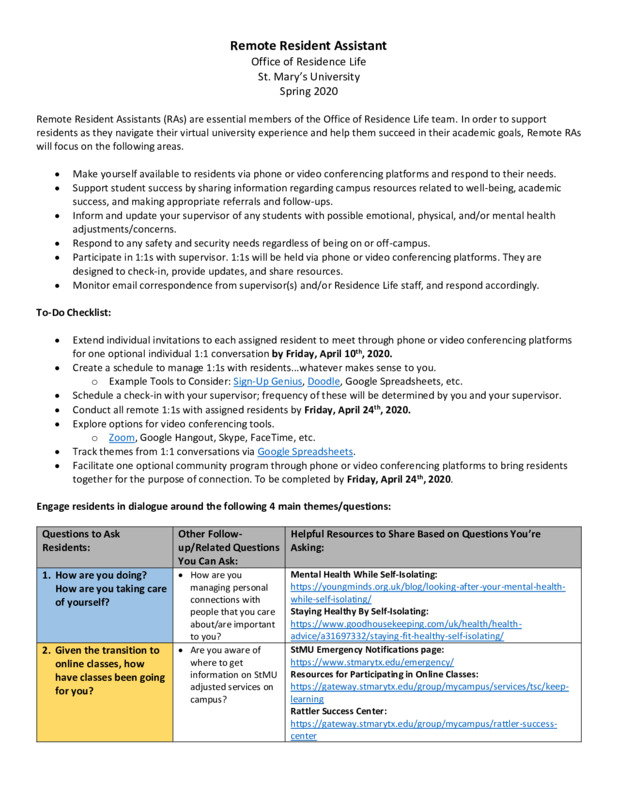
How To Be a Resident Assistant During Covid-19
Spring 2020 residents were sent home after spring break. Resident assistants became a virtual resource for students at home.

Resident Assistants: When Residence Halls Re-Open
Fall 2020 residence halls opened back up to students. With the option to live on campus now available, resident assistants were needed back on campus.
A few semesters further into the pandemic, and a lot more has changed though, we're still not "back to normal." Residence halls continue to be open and most classes are in-person again. Fall 2021 has been a semester of re-adjusting as many had to learn to live on campus and socialize again. In addition, many students had to learn to live with roommates again. Some had to learn to live on campus for the very first time with policies like wearing face masks in common areas. The office of Residence Life and student staff were responsible for enforcing policies meant to protect the community like wearing face masks and limiting guests. Resident assistants were able to facilitate more traditional events and programs for residents. Although nothing was normal, it was as close to the pre-Covid experience many of us knew.
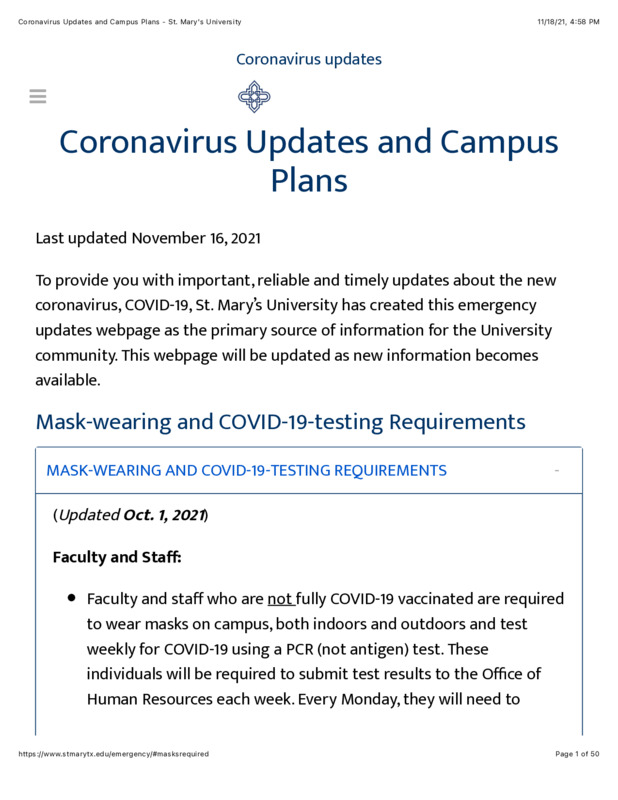
Fall 2021: Another Semester of Transition
After three semesters of dealing with the Covid-19 pandemic, many were hopeful for a semester resembling "normal."
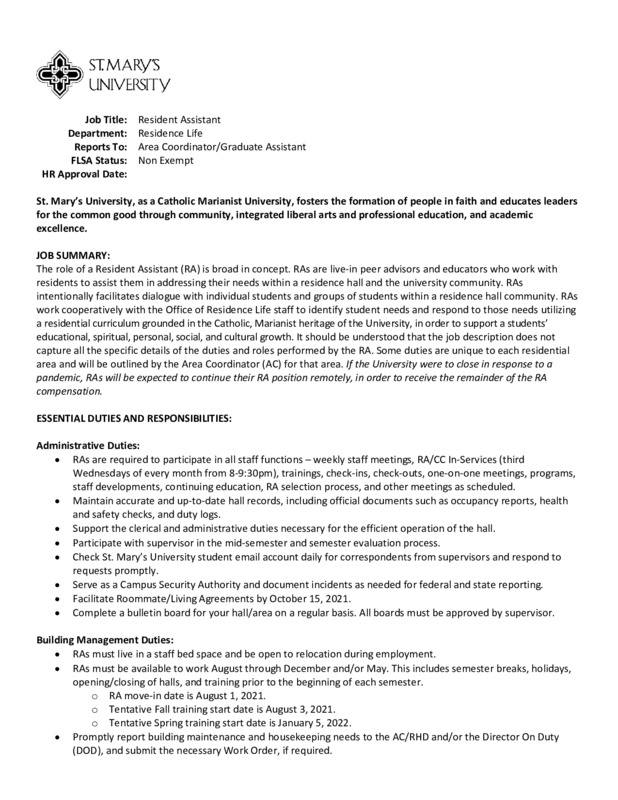
Fall 2021: Creating Community No Longer Virtual
Creating community has been difficult over the last semesters. How do resident assistants create engaging opportunities for residents?
One of the many impacts Covid has had on students has been their first-year experience. For some staff that have pre-Covid experience, it can be difficult to adjust. On the other hand, it can be quite easy for resident assistants with no pre-covid experience to relate to the newer student population. Resident assistants have had to navigate their way around college just like other students. They were also sent home and dealt with transitioning back to campus. To better serve the residents, student staff has had to take into account the different needs for residents based on their first-year experiences.

Andrea Moreno Oral History, 2021/11/21
In this oral history, a returning resident assistant explains how Covid has changed her campus experience. She did not expect to take classes via zoom, much less did she expect to connect with her residents the same way.

First-year resident assistant: Covid Campus
In this oral history, a first-time resident assistant explains how being virtual before college has allowed her to relate better to first-year residents.
Where do I go from here?
After a student has attended Zaragoza and gotten comfortable in their dorms there are still services students living on campus during COVID-19 need assistance with. They've met their RA's and student leaders who are meant to guide them as they adjust to being a part of the campus community in different circumstances than Rattlers just three years prior. What if I need help with my Financials? My mental health? My rooming situation? Rattlers have had a lot of questions on what support services were available to them and here is how St. Mary's answered them.
Living on campus came with new regulations that students had never heard of before the pandemic. Rooms were no longer filled to their maximum occupancy and the concept of roommates was primarily extinct on the St. Mary's campus. Entire residency halls were isolated and designated as COVID-positive halls for sick students to stay in while they battled the virus. Being isolated in a dorm room came with mental struggles that students had to battle too.
Students were shown support for their mental health via Instagram with organizations from the university relating the importance of mental health and providing ways for students to reach out. A part from guiding students to mental health resources the university also celebrated the accomplishments of their students to give them the college experience as much as they could. Celebrating with incoming freshmen on their acceptance is a small but meaningful step in helping students feel good about themselves and their future.
WAIT! What about paying for school?!
Many students struggled financially from COVID-19 for a multitude of reasons. Many college students lost their jobs or had their parents suffer economic hardship as a result of the pandemic. However, the cost of college was still there and students had to find a way to cover costs amid the economic struggle.
St. Mary's faced an influx of students reaching out to support services like the Office of Student Retention to guide students on their financial troubles. Through providing funding via the CARES Act to students, St. Mary's helped offset some of the costs weighing down on students. For those who were not helped enough by the CARES Act the office of student retention met with and aided in finding a solution for students.
After meeting with the office of Student Retention, students now had the direction they needed. Students were guided to the Financial Aid office or the Dean of Students when they were in need of help. In addition, students were able to use the Rattler Navigate app set up by the office of student retention to make meetings with their professors and the offices around campus via Zoom. So how did students actually feel about living on campus during the pandemic? Did they actually utilize these services?
St. Mary's student Jorge Martinez gives insight into his experience living on campus for the first time in 2020 mid-pandemic. He recounts how he was able to utilize Student Life to accommodate for his extraneous conditions and is thankful for living on campus.
Conclusion
In Fall 2021, after over a year of primarily virtual learning, students faced many challenges returning to an in-person college experience. Beginning Fall 2021, new St. Mary's students began their journey as Rattlers attending Zaragoza for the first time with new Covid protocols and policies in place to protect everyone. The rules and regulations of the event were different than they were before and both Zaragoza leaders and new students were facing this new experience together. From there all students, new and old, had to adapt to the new Residence Life rules that altered their normal living procedures. Resident Assistants had new protocols in place to connect with their residents and residents had to adapt to a semester without the social interaction of a roommate. The new online classes and social isolation may have felt like a burden on students but Zaragoza leaders and Resident Assistants provided the peer help students needed. Alongside this peer support, students were also helped by the university's student support services.
Overall, the university, faculty, and staff went through great lengths to provide students with the most "normal" college experience amid the unnormal circumstances this Fall. St. Mary's is a community dedicated to providing and supporting its students, and this has shown during the pandemic.




